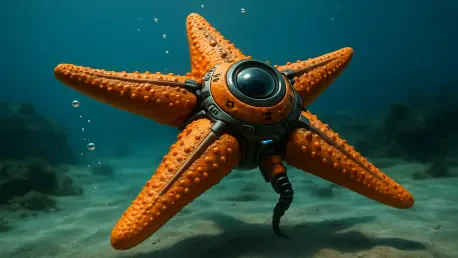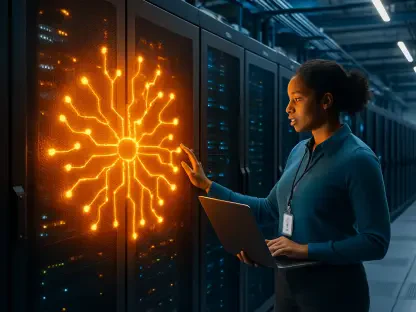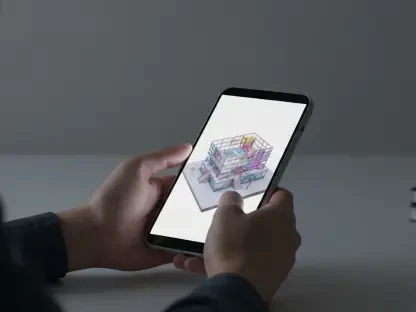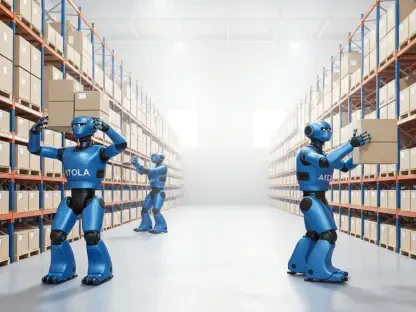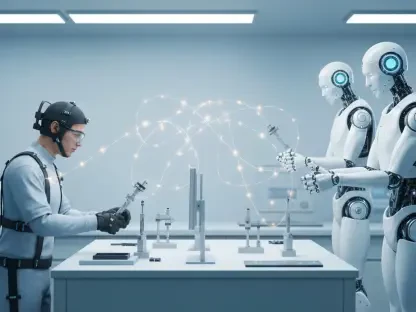What lies beneath the ocean’s surface often remains a mystery, with vast depths posing challenges that even the most advanced technology struggles to overcome, leaving us in awe of nature’s resilience. Picture a robot fumbling to grasp a slippery rock on the seabed, unable to secure a hold amidst swirling currents. This scenario highlights a critical gap in underwater robotics—a need for reliable gripping systems that can adapt to wet, unpredictable environments. Enter an unlikely hero: the starfish, a creature whose natural design is inspiring a technological leap that could transform how robots navigate and manipulate objects in the deep sea. This exploration delves into a groundbreaking innovation poised to redefine marine exploration and beyond.
Nature’s Underwater Grip Experts Unveiled
Deep in the ocean, starfish glide effortlessly across jagged rocks and slick surfaces, defying the chaos of their surroundings. Their secret lies in tiny tube feet—hundreds of flexible, suction-like appendages that allow them to cling with precision and release at will. This remarkable ability to adhere without chemical aids has caught the attention of engineers seeking solutions for underwater challenges. By studying these sea creatures, researchers have unlocked a blueprint for technology that mimics this natural prowess, offering a glimpse into how biology can inform cutting-edge robotics.
The fascination with starfish extends beyond mere observation. Their tube feet operate through a combination of mechanical pressure and physical deformation, creating a temporary yet powerful bond with surfaces. This mechanism stands in stark contrast to traditional robotic grippers, which often falter in wet conditions. Drawing from this organic model, scientists aim to equip machines with a similar capacity to grip and maneuver, potentially unlocking new frontiers in underwater tasks that demand both strength and finesse.
The Urgent Need for Innovation in Underwater Robotics
Underwater robots play a pivotal role in industries ranging from marine research to offshore infrastructure maintenance, yet their limitations are glaring. Slippery environments and erratic ocean currents frequently hinder their ability to handle objects securely, leading to inefficiencies or mission failures. As demands grow for precise operations in areas like environmental monitoring and deep-sea resource extraction, the shortcomings of conventional gripping tools become increasingly apparent, underscoring the need for a transformative approach.
Current technologies often rely on rigid mechanisms or chemical adhesives that lose effectiveness in water or pose environmental risks. These drawbacks limit the scope of what robots can achieve beneath the waves, from collecting delicate samples to repairing underwater structures. A novel solution inspired by nature could bridge this gap, providing the adaptability and reliability required to meet modern challenges in aquatic settings, paving the way for more ambitious explorations.
Decoding the Starfish-Inspired Breakthrough
At the heart of this innovation is a sophisticated design that replicates the starfish’s tube feet through a blend of soft and rigid materials. Engineers have developed artificial versions featuring a pliable hydrogel mouth paired with a sturdy stem, enabling a gripping force of up to 65 kPa underwater through vacuum creation and material stretching. This setup allows robots to attach firmly to varied surfaces, mimicking the sea creature’s ability to navigate complex terrains with ease.
Unlike traditional methods that depend on glues—often impractical or harmful in wet conditions—this technology employs purely mechanical principles for adhesion. The result is a reversible, sustainable grip that can detach swiftly via pneumatic actuation, responding to external triggers without leaving residue. Early tests demonstrate robots successfully lifting rocks and maneuvering in confined underwater spaces, hinting at a versatile tool that could redefine operational standards.
The potential applications stretch far beyond the ocean floor. In controlled environments like MicroLED manufacturing, this system promises precision in transferring tiny chips, enhancing production of advanced displays. Similarly, in biomedical fields, it offers possibilities for glue-free patches and sensors that adhere to wet skin without irritation, showcasing a breadth of impact that transcends a single domain.
Expert Perspectives on Bioinspired Advancements
Insights from leading minds in the field highlight the significance of this development. Professor Hyunsik Yoon from Seoul National University of Science and Technology notes, “Emulating the starfish has led to a gripping system that performs under the toughest underwater conditions, with the ability to attach and release on command.” Such statements reflect a growing belief in soft robotics that nature’s designs often surpass conventional engineering in adaptability and efficiency.
Research published in prominent journals reinforces this view, positioning the technology as a potential benchmark for adhesion solutions. Experts argue that integrating biological principles into synthetic systems could address long-standing hurdles across multiple sectors. This consensus suggests that the starfish-inspired approach might not only enhance robotic capabilities but also inspire a wave of innovations in how machines interact with challenging environments.
Real-World Applications and Future Potential
Implementing this technology offers tangible benefits for underwater robotics and related fields. Equipping robots with these bioinspired grippers can significantly improve tasks like deep-sea sampling or pipeline repairs, ensuring a steadfast hold on diverse surfaces through quick-release pneumatic systems. Such advancements could elevate the precision and safety of missions that probe the ocean’s depths, from scientific discovery to industrial maintenance.
Beyond the marine realm, scaling this adhesion system to industrial needs shows immense promise. In high-tech manufacturing, particularly for MicroLED displays, it enables error-free handling of delicate components, streamlining processes and boosting output quality. This precision could accelerate the development of next-generation electronics, making devices more efficient and accessible to consumers globally.
In healthcare, the glue-free adhesion opens doors to innovative solutions like wearable sensors or surgical tools that attach securely to moist tissue without discomfort. By prioritizing patient safety and ease of removal through stimulus-responsive designs, this approach could transform medical applications. These varied uses illustrate a clear path from concept to impactful, real-world tools that address pressing modern challenges.
Reflecting on a Nature-Inspired Leap Forward
Looking back, the journey from observing starfish on the ocean floor to crafting a revolutionary gripping system marked a profound shift in technological thinking. Scientists and engineers tackled persistent underwater challenges by borrowing from nature’s ingenuity, crafting a solution that delivered strength and versatility where traditional methods fell short. This endeavor underscored the power of bioinspired design in solving complex problems with elegance and sustainability.
As attention turned toward the future, the focus shifted to refining and expanding this technology’s reach. Efforts began to integrate these grippers into broader robotic systems, aiming to enhance capabilities from 2025 onward. Plans emerged to test applications in more extreme conditions and diverse industries, ensuring that the potential glimpsed in early trials matured into lasting advancements. This path promised not just better robots, but a deeper understanding of how nature’s lessons could shape tomorrow’s innovations.
